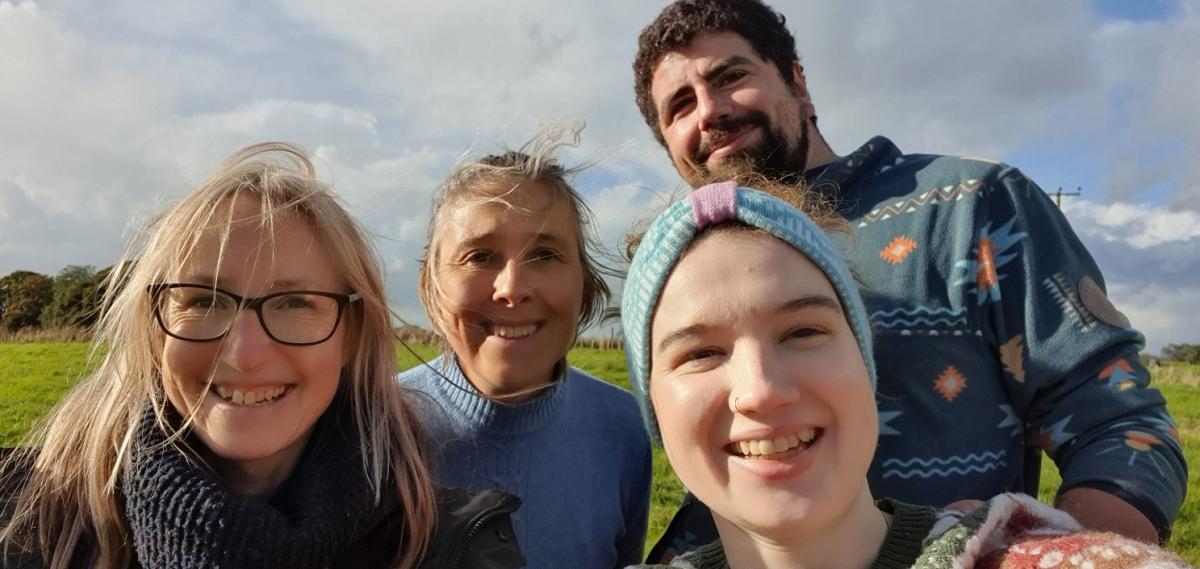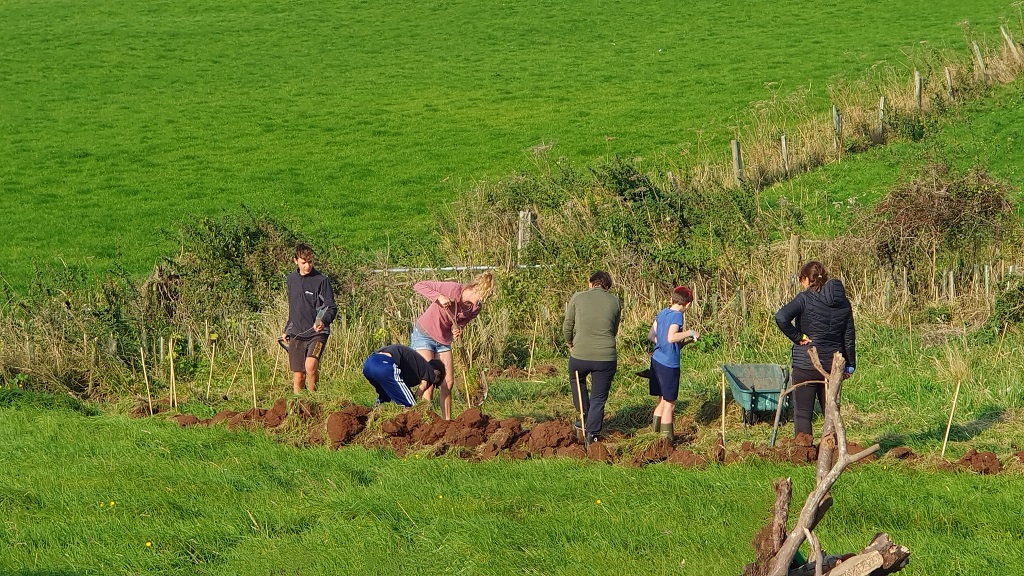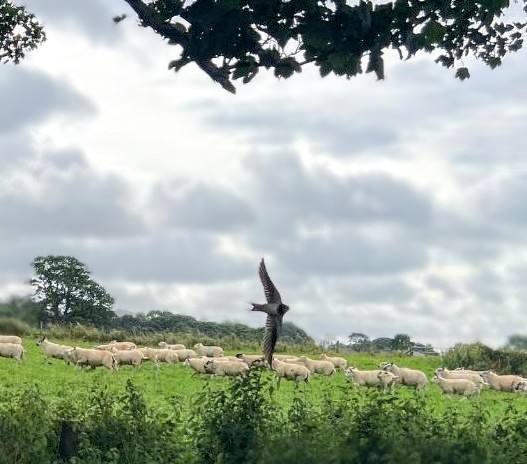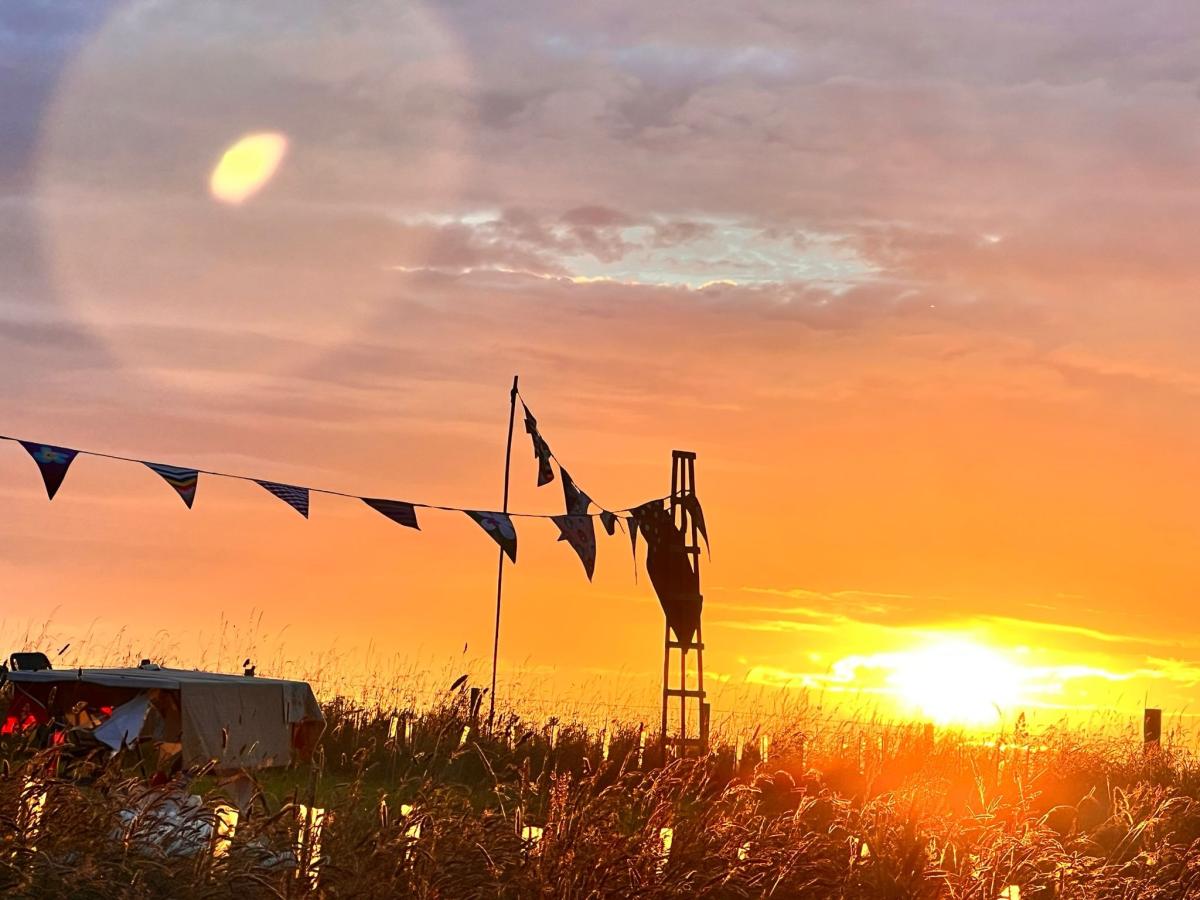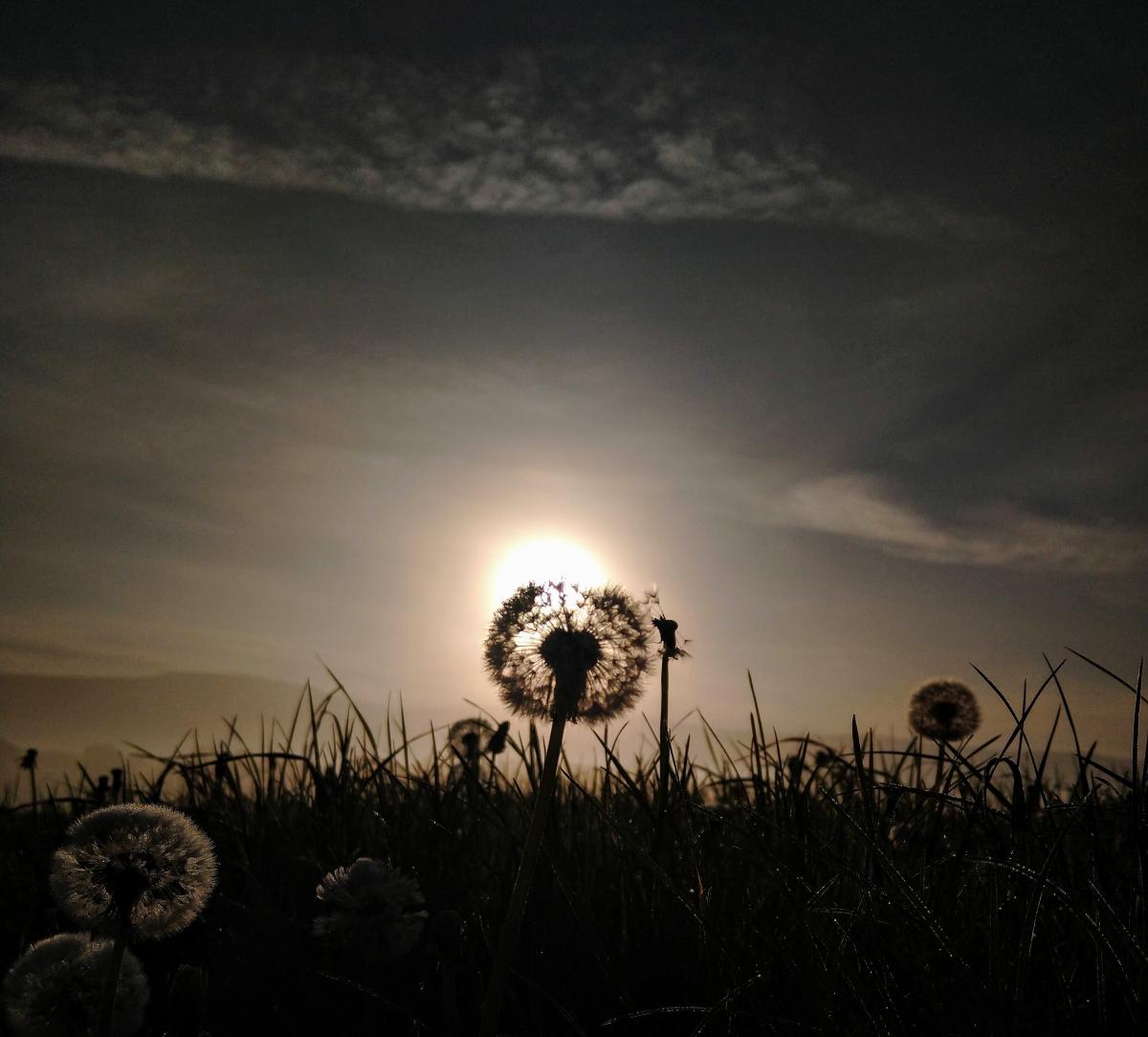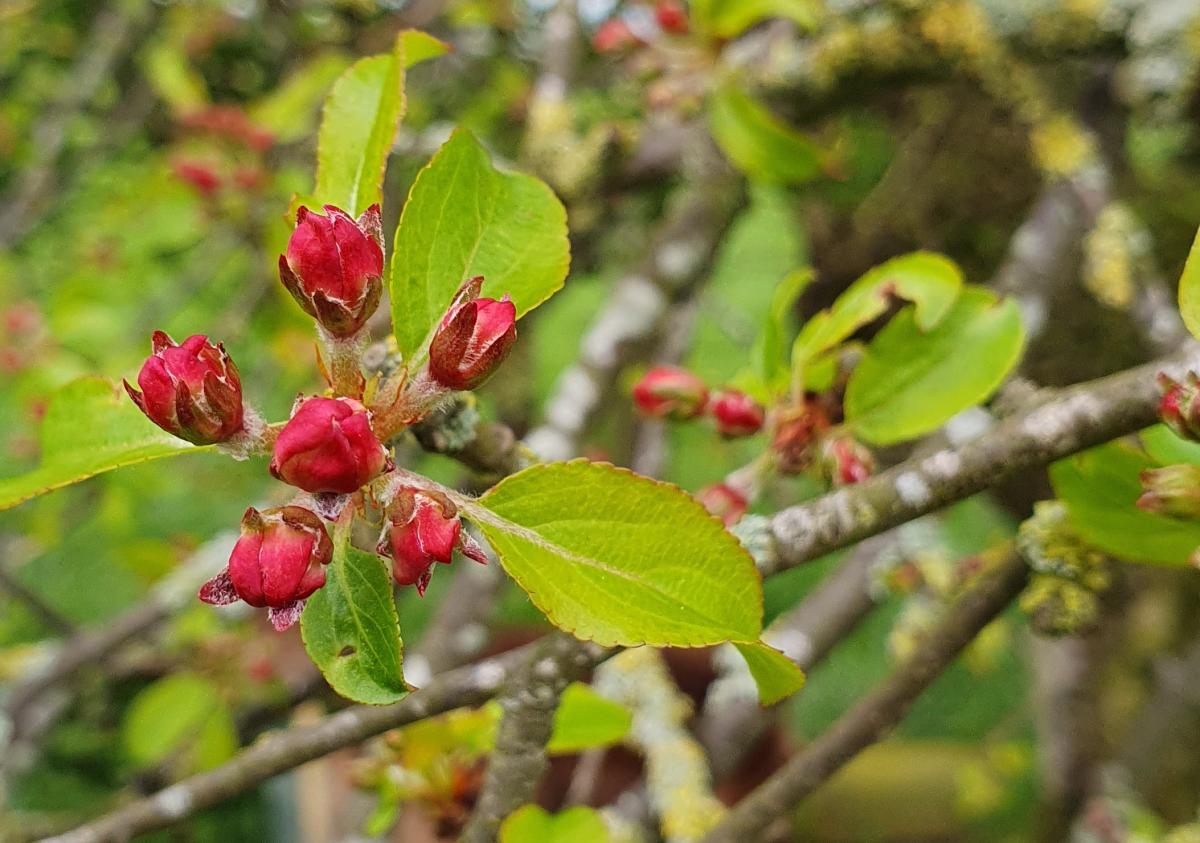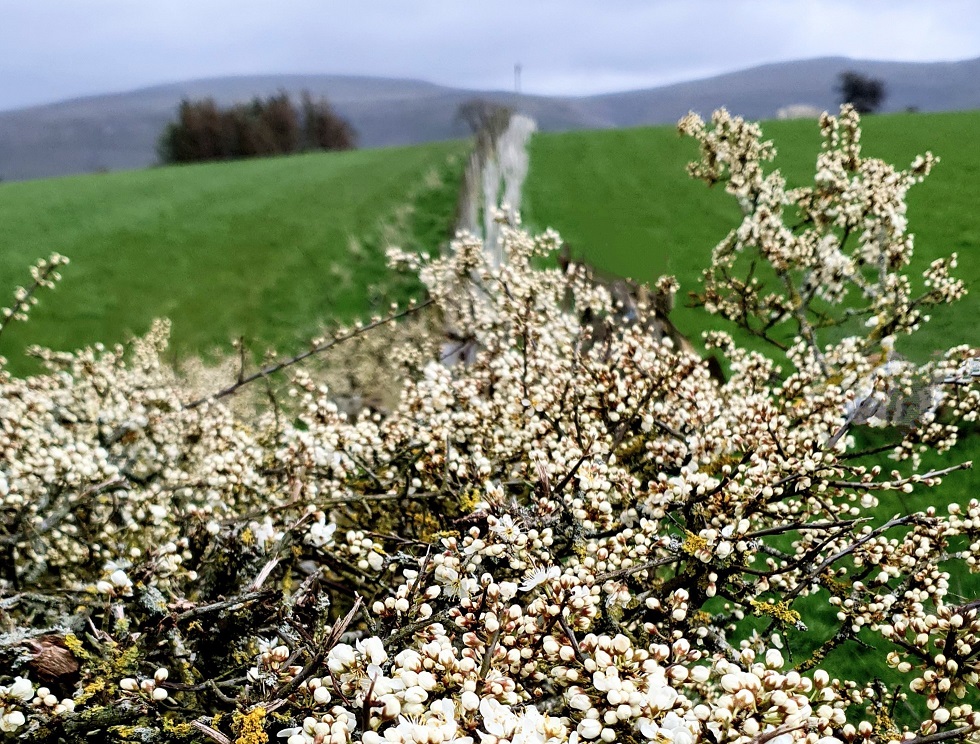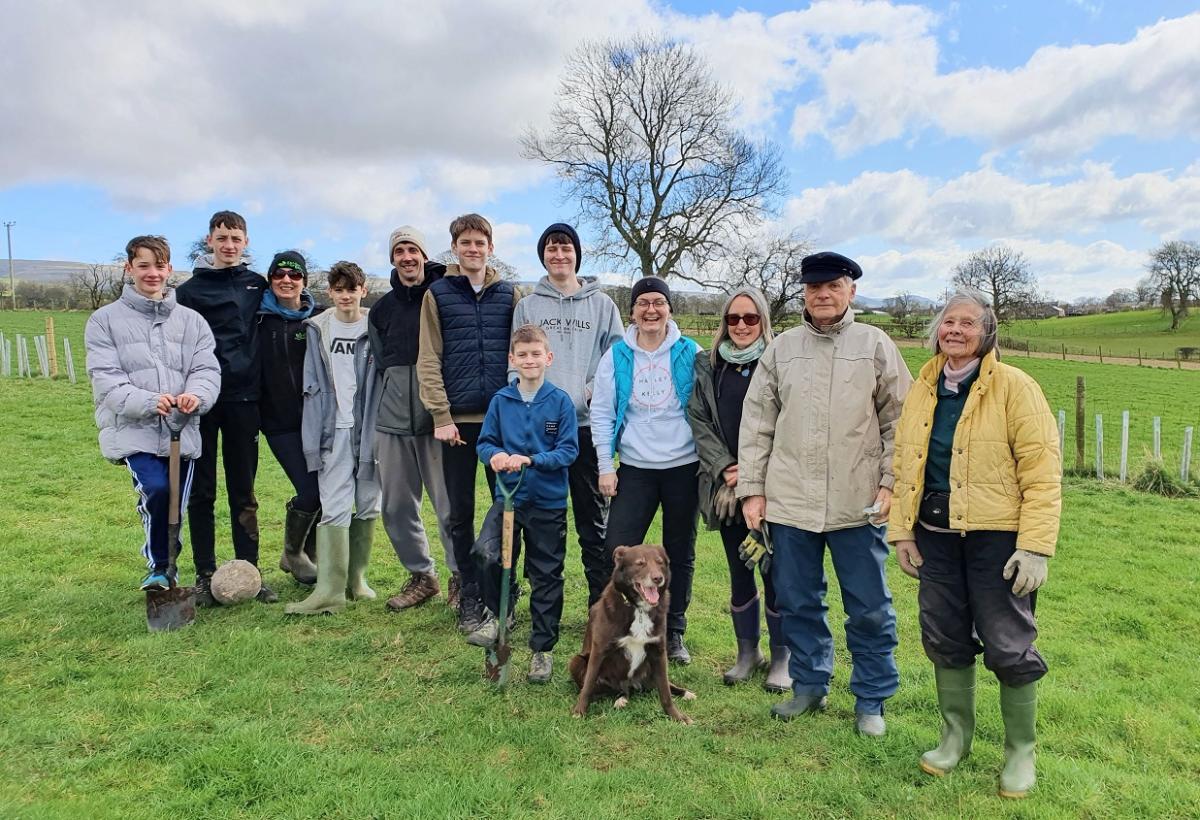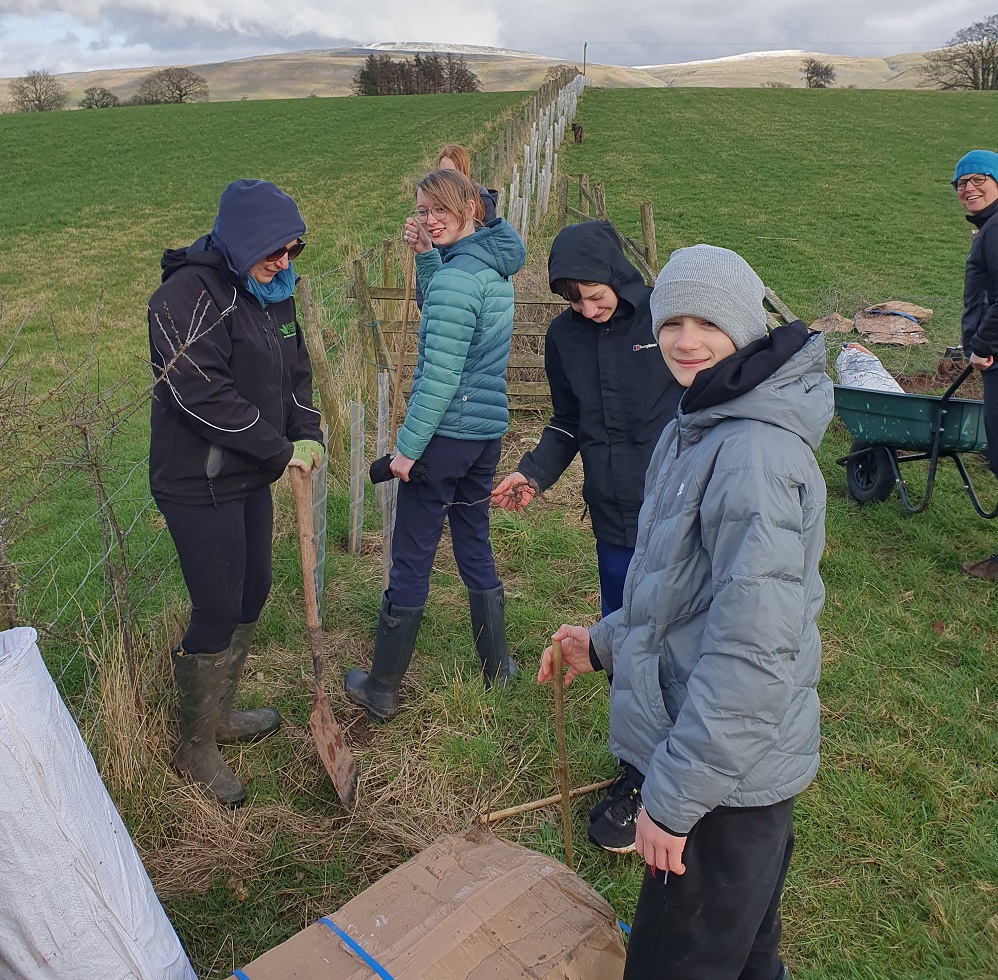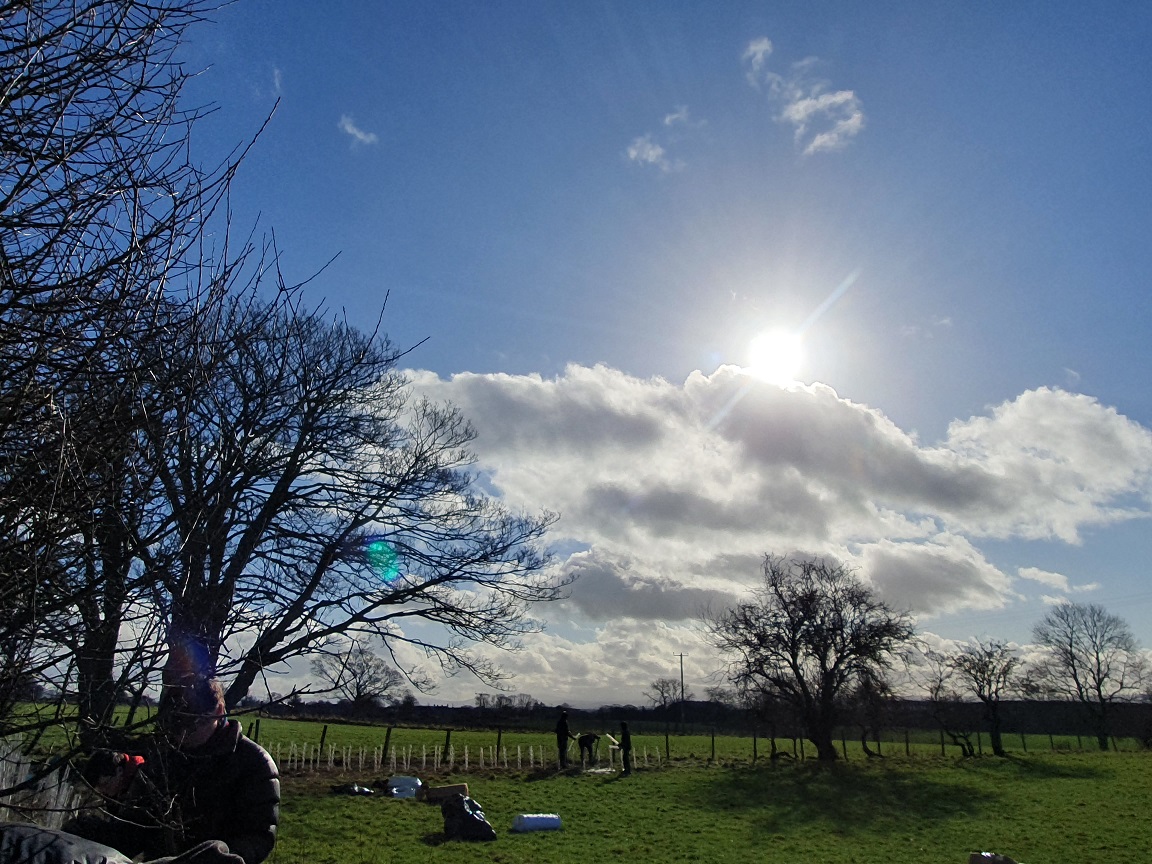A project of regeneration creating environmental and social change
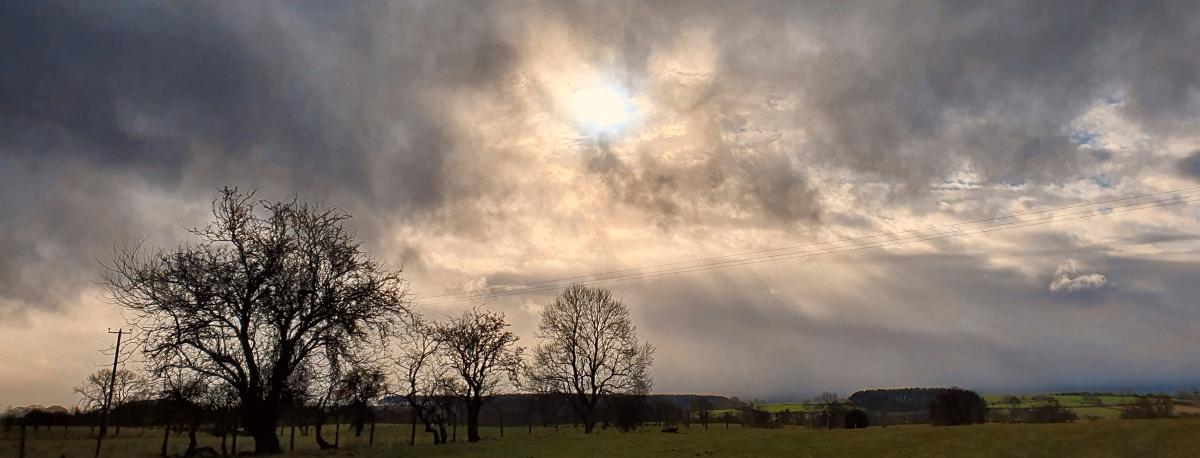
Long-term friend of PACT Elizabeth Woodcock has recently taken over a two-and-a-half acre field under Cross Fell, in the Eden Valley. She plans to transform it into a biodiverse, edible garden to benefit all life, human and non-human, taking a forest garden approach. She invites PACT members to get involved in this process and watch the site develop.
It was lovely to have Charlotte from Cumbria Wildlife Trust on Sandilands taking core soil samples and discussing a future partnership as part of the B-lines project. It turns out the soil is high in phosphorus which could mean some species of flowers will find it hard to establish.
As the leaves begin to turn and the berries to ripen; as the fungi fruits begin to grow and the Earth dampens down into decay and silence, we're upping our energy to create.
There are still swallows flying over Sandilands, not yet departed for Africa. A few weeks ago, I met up with wildlife artist and avid birder David Cemmick from the local Village. While he was watching the sheep over the newly growing hedge, he snapped one swallow swooping after some tasty insects.
It's been sometime since I've written and I wonder if anyone reads but as I was sitting on Sandilands with friends the other day, drinking coffee, they said 'what you're doing is inspiring so carry on writing'... so here is the next instalment.
One week Sandilands is yellow, the next white and fluffy as the dandelions go to seed. For the first time, I see a charm of goldfinch feeding on dandelion seeds on a village verge. In my own garden, pairs of them arrive taking beakfuls of sheep wool, that I leave around each year, for nesting material.
As a child the village shop sold 'pop', aka fizzy drinks, in big glass bottles. The label had Penrith Beacon on it, and flavours included dandelion and burdock. It was black. When you'd finished your pop you took the glass bottle back in exchange for 5p which was then spent on penny sweets from the rows of glass jars lining the shelves.
The Mother of the Woods; the crossing from winter to spring.
The blackthorn blossom is still not open, later here than in the sheltered places, as storm Kathleen’s winds are howling from the South. If you’re seeing white in hedgerows now, it’s blackthorn, white blossoms of spring against the dark wood of winter bare, holding ominous spikes, that can puncture leather. Blood cleanser, digestive aid and rheumatism easer.
A couple of weekends ago I was talking about attracting wildlife to new build gardens at PACT’s tool and seed swap day. Collecting information through a variety of sources, a neighbour mentioned that at Knepp Estate, Isabella Tree said their squadrons of goldfinches came back when they let the blackthorn grow. Birds love thickets for food and shelter. Here in my urban garden the bluetits haven’t come back to nest yet.
It's a kind of humorous poetry to be planting a windbreak in 60mph winds, straight off the fell, tearing down the fields and whipping away the warmth from our fingers. We need shelter to grow and thrive, just as the creatures of our world do too, whether it's in an open landscape or a small garden.
The snow is lying in the hollows of the hills which rest above the fields like a great backbone with their white ribs of snow. The cold tang in the air, and I'm thinking about prevailing wind direction and there isn't one. We're so close to Cross and Great Dun fell, that give us a North East blast, but then on other days there's a southwest current rippling over the valley from the lakes.
